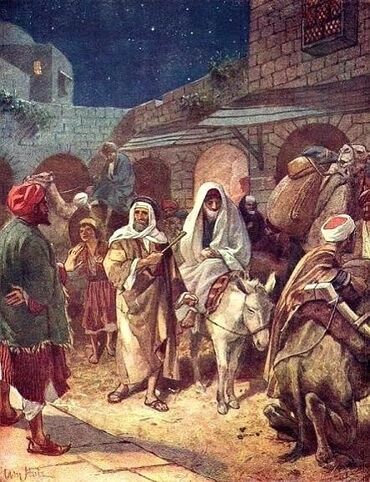1
Et factum est in mense septimo, venit Ismahel filius Nathaniæ filii Elisama, de semine regali, et optimates regis, et decem viri cum eo, ad Godoliam filium Ahicam, in Masphath, et comederunt ibi panes simul in Masphath.
2
Surrexit autem Ismahel filius Nathaniæ, et decem viri qui cum eo erant, et percusserunt Godoliam filium Ahicam filii Saphan gladio, et interfecerunt eum quem præfecerat rex Babylonis terræ.
3
Omnes quoque Judæos qui erant cum Godolia in Masphath, et Chaldæos qui reperti sunt ibi, et viros bellatores, percussit Ismahel.
4
Secundo autem die postquam occiderat Godoliam, nullo adhuc sciente,
5
venerunt viri de Sichem, et de Silo, et de Samaria, octoginta viri, rasi barba, et scissis vestibus, et squallentes : et munera et thus habebant in manu, ut offerrent in domo Domini.
6
Egressus ergo Ismahel filius Nathaniæ in occursum eorum de Masphath, incedens et plorans ibat : cum autem occurrisset eis, dixit ad eos : Venite ad Godoliam filium Ahicam.
7
Qui cum venissent ad medium civitatis, interfecit eos Ismahel filius Nathaniæ circa medium laci, ipse et viri qui erant cum eo.
8
Decem autem viri reperti sunt inter eos, qui dixerunt ad Ismahel : Noli occidere nos, quia habemus thesauros in agro, frumenti, et hordei, et olei, et mellis : et cessavit, et non interfecit eos cum fratribus suis.
9
Lacus autem in quem projecerat Ismahel omnia cadavera virorum quos percussit propter Godoliam, ipse est quem fecit rex Asa propter Baasa regem Israël : ipsum replevit Ismahel filius Nathaniæ occisis.
10
Et captivas duxit Ismahel omnes reliquias populi qui erant in Masphath, filias regis, et universum populum qui remanserat in Masphath, quos commendaverat Nabuzardan, princeps militiæ, Godoliæ filio Ahicam : et cepit eos Ismahel filius Nathaniæ, et abiit ut transiret ad filios Ammon.
11
Audivit autem Johanan filius Caree, et omnes principes bellatorum qui erant cum eo, omne malum quod fecerat Ismahel filius Nathaniæ,
12
et assumptis universis viris, profecti sunt ut bellarent adversum Ismahel filium Nathaniæ : et invenerunt eum ad aquas multas quæ sunt in Gabaon.
13
Cumque vidisset omnis populus qui erat cum Ismahel Johanan filium Caree, et universos principes bellatorum qui erant cum eo, lætati sunt :
14
et reversus est omnis populus, quem ceperat Ismahel, in Masphath, reversusque abiit ad Johanan filium Caree.
15
Ismahel autem filius Nathaniæ fugit cum octo viris a facie Johanan, et abiit ad filios Ammon.
16
Tulit ergo Johanan filius Caree, et omnes principes bellatorum qui erant cum eo, universas reliquias vulgi quas reduxerat ab Ismahel filio Nathaniæ de Masphath, postquam percussit Godoliam filium Ahicam : fortes viros ad prælium, et mulieres, et pueros, et eunuchos, quos reduxerat de Gabaon.
17
Et abierunt, et sederunt peregrinantes in Chamaam, quæ est juxta Bethlehem, ut pergerent, et introirent Ægyptum,
18
a facie Chaldæorum : timebant enim eos, quia percusserat Ismahel filius Nathaniæ Godoliam filium Ahicam, quem præposuerat rex Babylonis in terra Juda.







